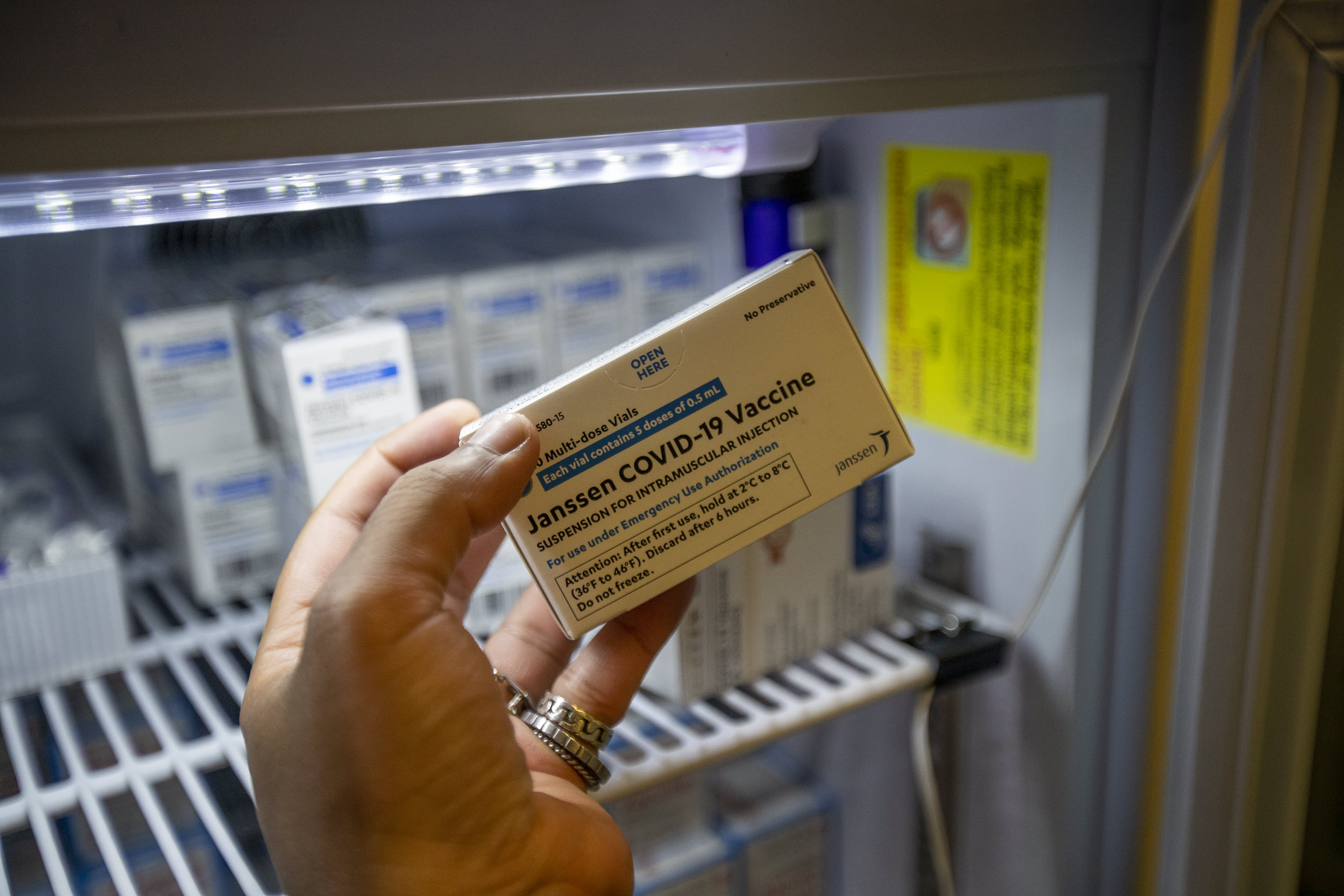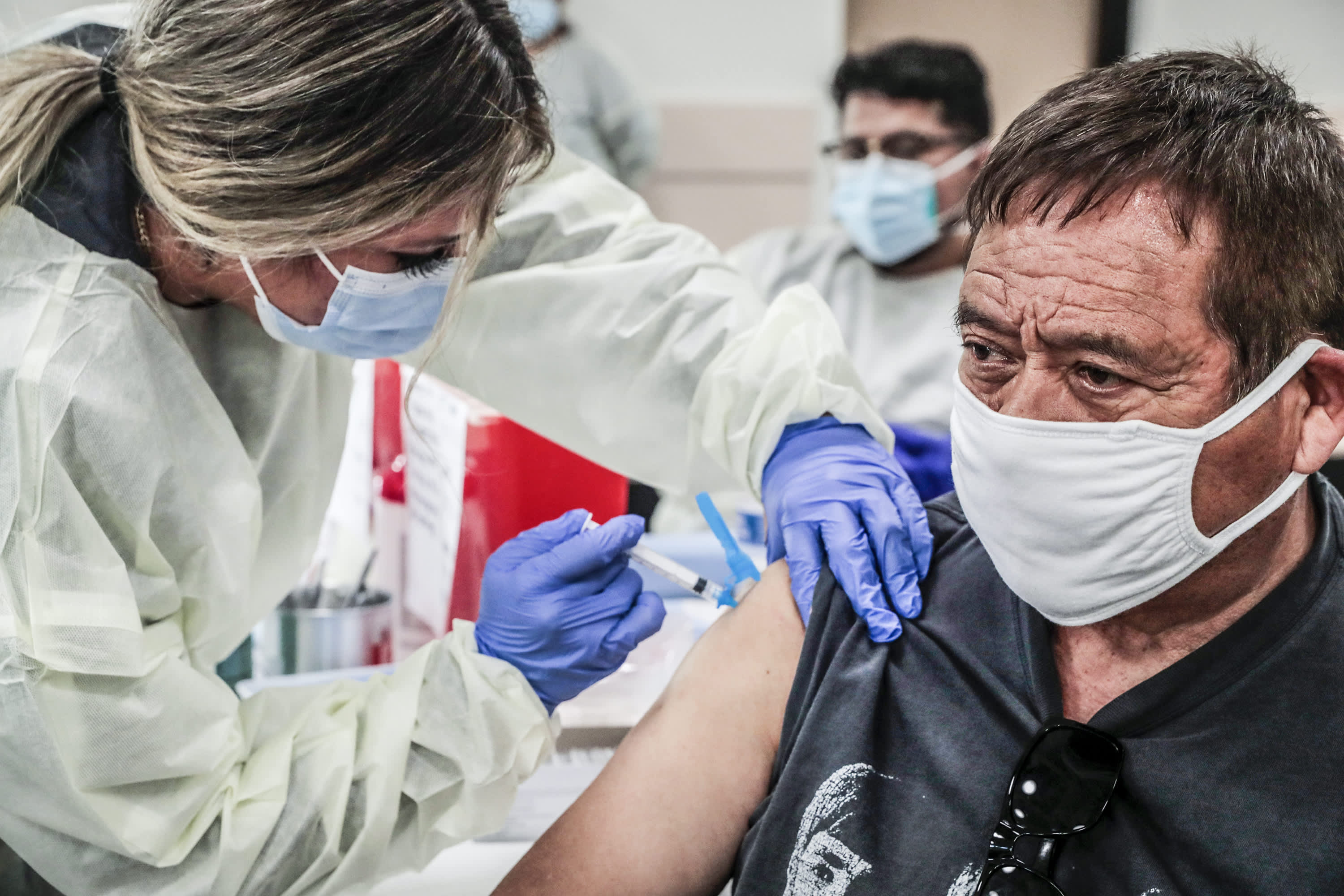What the Data Shows
The growth of new COVID-19 cases has slowed in D.C., Maryland and Virginia over the past few days, although hospitalizations are still elevated.
Current hospitalizations have increased in the past week in all three areas, but that’s expected following the uptick in cases seen in the past several weeks.
Average vaccinations administered daily dipped after Johnson & Johnson's shot was put on pause, but more people are still getting vaccinated daily in April than in March.
We're making it easier for you to find stories that matter with our new newsletter — The 4Front. Sign up here and get news that is important for you to your inbox.
D.C. added just 72 cases on Wednesday and the weekly average of new cases fell to 105. Hospitals are treating 146 COVID-19 patients.
As of Friday, 30% of residents were partially or fully vaccinated.
Maryland reported 1,205 new cases and the weekly average of new cases fell to 1,205 — which is still high, but the lowest figure seen in April.
Gov. Larry Hogan says Maryland has given out 4 million shots, and over 82% of seniors and 55% of adults have gotten a dose.
Virginia’s weekly case average went below a thousand for the first time in two weeks, reaching 968. Just over 40% of people have gotten a one or two doses.
Local Coronavirus Headlines
- Capital One Arena is set to welcome more than 2,000 fans for the Wizards game on Wednesday night.
- A Maryland biotech company developed a test to help predict how sick you can get from COVID-19. The company is awaiting FDA emergency use approval.
- Virginia has a new mass vaccination site at Tysons Corner Center. Here's how to look for an appointment to get your shot there.
- The George Washington University became the latest local college to require vaccinations for students, faculty and staff before being on campus this fall. Any vaccine authorized for use in the U.S. will be accepted, the university said Monday. Georgetown and American universities previously announced vaccine requirements for students for the fall semester.
- Virginia opened vaccinations to residents age 16 and older Sunday. The commonwealth will continue to prioritize people who were eligible for vaccines in Phase 1, including healthcare personnel, residents of long-term care facilities, frontline essential workers, those age 65 and older, and more. Here's information on how to get one.
- D.C. opened walk-up vaccination sites for residents age 65 and older.
- The Virginia Department of Health says the first cases of the so-called Brazil COVID-19 variant have been identified in two samples from residents.
- One of D.C.'s largest music venues reopened for the first time in more than a year, but as a pop-up vaccine clinic.
- Business owners in Alexandria, Virginia, teamed up with a pharmacy and the health department to bring a vaccine clinic to their employees.
- The Centers for Disease Control and Prevention is looking into the March death of a Virginia woman as part of its investigation into the Johnson & Johnson COVID-19 vaccine, according to the Virginia Department of Health.
- Maryland, D.C. and Virginia each canceled Johnson & Johnson COVID-19 vaccinations after the CDC and FDA recommended a pause in use of the shot after six women reported rare blood cots.
- The Washington Nationals and DC United are allowed to increase capacity at home games from 10% to 25%. Monumental Sports will also allow 10% capacity for Capitals and Wizards home games.
- Some mass vaccination sites in Maryland are offering a limited number of walk-up shots every day, no appointment needed.
- A new mass vaccination site is open at the Greenbelt Metro station in Prince George’s County. It offers shots to anyone, not just Maryland residents. Go online here to create an account.
- NBC News is making finding information on when, how and where to obtain your coronavirus vaccination easier with its Plan Your Vaccine website.
Key Charts and Graphs
The vaccinated population in D.C. may be overestimated in this map because some non-residents who work in D.C. are included in the totals.
Vaccination Portals by County
As vaccinations in our region ramp up, here's a look at local portals residents can use to sign up for vaccination appointments or sign up to receive alerts.
- Washington, D.C. signups – vaccinate.dc.gov
- Maryland signups – www.marylandvax.org/ and covidvax.maryland.gov
- Virginia pre-registration – https://vaccinate.virginia.gov/preregister.html
- Montgomery County – www.montgomerycountymd.gov/covid19/vaccine/
- Prince George's County – www.princegeorgescountymd.gov/3730/COVID-19-Vaccination
- Howard County – www.howardcountymd.gov/Departments/Health/MM-Alerts-and-Recalls/COVID-19-Vaccine
- Anne Arundel County – aacounty.org/covidvax
- Fairfax County – www.fairfaxcounty.gov/health/novel-coronavirus/vaccine
- City of Alexandria – www.alexandriava.gov/health/info/default.aspx?id=119270
- Loudoun County – www.loudoun.gov/covid19vaccine
- Prince William County – coronavirus.pwcgov.org/vaccine-information/ & VDH
How to Stay Safe
Anyone can get COVID-19. Here are three simple ways the CDC says you can lower your risk:
- Wear a snug-fitting mask that covers your nose and mouth.
- Avoid being indoors with people who are not members of your household. The more people you are in contact with, the more likely you are to be exposed to COVID-19. If you are indoors with people you don’t live with, stay at least six feet apart and keep your mask on.
- Wash your hands often, especially after you have been in a public place.





